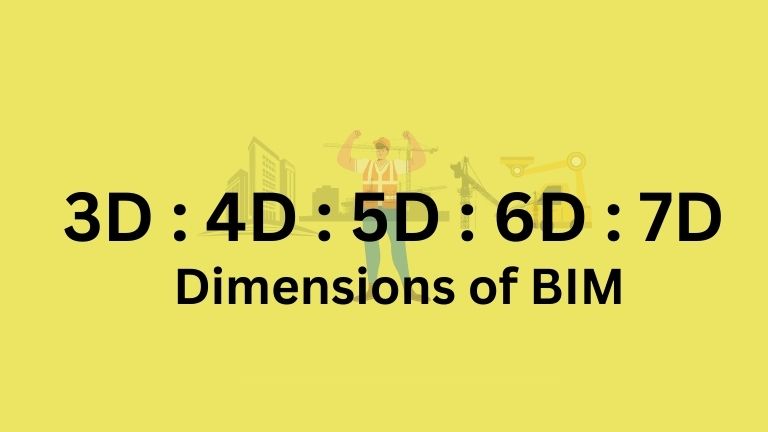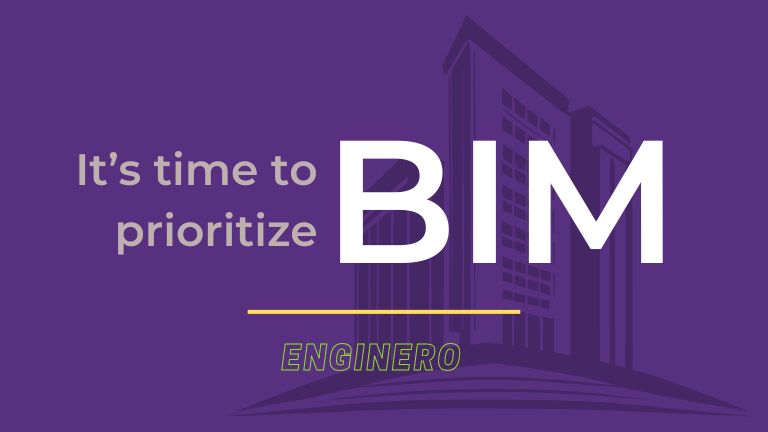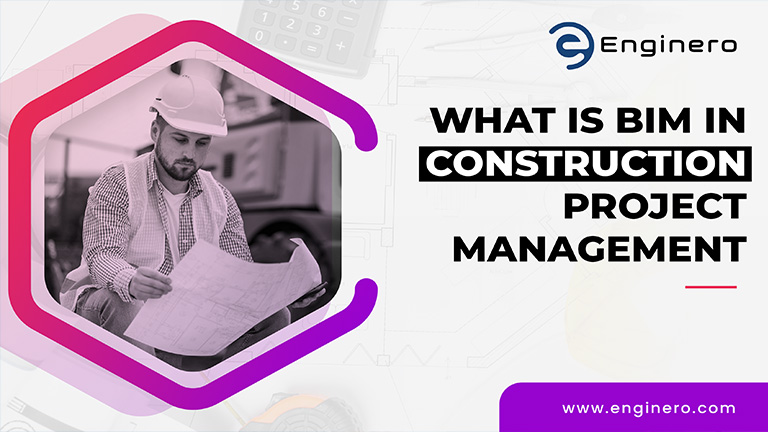BIM in Construction project Management can save the construction cost by 20%. BIM has helped many construction companies increase their revenue with their collaborative features.
Building Information Modeling is a tool used in the construction industry to collaboratively design, visualize, and manage construction projects.
BIM facilitates seamless collaboration between engineers, contractors, and architects, increasing coordination and lowering errors throughout the project lifecycle.
Having BIM in Construction Projects can enhance efficiency, decision-making, and project objectives.
In this blog, you will learn about :
- BIM in the Construction Industry
- Dimensions of BIM
- Benefits of BIM in Construction Project Management
- Future of BIM in Construction Project Management
- Kickstart BIM Collaboration with Enginero
BIM in the Construction Industry
Enhancing Collaboration and Efficiency
BIM revolutionizes existing project workflows in the construction industry by acting as a transformative tool.
BIM enables precise cost estimation, clash detection, and construction scheduling optimization by combining 3D models with extensive data attributes.
In addition, BIM facilitates better coordination and communication between project stakeholders, which improves project results, lowers rework, and increases efficiency during the building phase.
Overall, BIM is a fundamental component of modern construction methods, facilitating well-informed decision-making and efficient project management.
Dimensions of BIM in Construction Project Management:

From 3D Modeling to Safety
A BIM dimension refers to different layers or aspects of details represented within BIM software.
Each dimension provides a unique functionality and adds additional information to the model which allows comprehensive project management and analysis.
These dimensions provide layers of information on time, cost, sustainability, and facility management in addition to the traditional 3D modeling.
3D – Modeling
3D is the first dimension in BIM, which is mostly used in all construction firms. This dimension represents the spatial and physical dimensional aspect of the Building model, allowing stakeholders to visualize the building in three dimensions.
Also, this dimension serves as the base for all other dimensions as this provides comprehensive detail about the project.
4D – Scheduling of BIM in Construction Project Management
4D is the time dimension in BIM. This dimension adds time to the 3D model and initiates scheduling.
When the timeline is linked with the 3D model, the project completion can be estimated.
Project managers use 4D BIM to develop project schedules, identify scheduling conflicts, optimize construction sequencing, and evaluate project progress and timelines.
5D – Cost Estimation
5D is the dimension that adds cost estimates and related data to the 3D model and project schedule.
This dimension helps stakeholders estimate the cost, perform accurate cost analysis, and perform evaluations throughout the project lifecycle.
6D – Facility Management
6D is the BIM dimension that integrates facility management with the BIM model to support the after-construction activities. This dimension includes scheduling building maintenance, operational data, and asset management.
6D helps stakeholders make timely decisions related to further actions after building throughout the entire project’s lifecycle.
7D – Sustainability of BIM in Construction Project Management
7D targets the sustainability performance of the project which involves analyzing factors such as energy efficiency, material usage, and lifecycle impacts.
Integrating sustainability with the BIM model helps stakeholders make informed decisions to optimize building performance, analyze the building’s economic and operational aspects, and reduce environmental impacts.
8D – Safety
8D is all about safety information related to the project.
This dimension enables site and managers to prevent accidents, reduce risks caused during the building construction site, and predict the risks of human injury while constructing the actual building.
Benefits of BIM in Construction Project Management

Adapting BIM in Construction Project management benefits project members in several ways. Some of them are listed below,
Enhanced Productivity
With BIM, a centralized digital platform for project management is provided which improves collaboration and communication between teams and streamlines workflows.
This leads to effective communication in projects and speeds up the decision-making process. Also, BIM enables real-time report sharing, allowing project managers to be updated on the project status regularly.
With this, you can mitigate reworks, backlogs, and confusion in the project and ensure a smooth workflow.
Improved Collaboration in Construction Project Management
Real-time collaboration between different stakeholders, such as architects, engineers, contractors, owners, and clients, is now possible with BIM.
Better coordination is facilitated by this collaboration, enabling various trades to cooperate on design improvements and ensure project completion on schedule.
It provides a unified digital platform where stakeholders can collectively review designs, and plans, and make informed decisions. The centralized model allows for early error detection and resolution, reducing rework.
Minimizes Reworks
With Clash detection and issue tracking features, project managers predict the issues on hand and can take necessary actions in the design phase itself without wasting time for reworks.
Teams can effectively resolve clashes by recognizing conflicts between building pieces early on.
Moreover, issue tracking facilitates the prompt identification and resolution of issues as they appear, simplifying the construction process and guaranteeing project success.
Sustainability Management in Construction Project Management
BIM enhances sustainability, by providing an analysis report on construction projects by providing insights into environmental impacts, raw material usage, and energy performance.
This allows project managers to mitigate material waste and reduce energy consumption, contributing to environmental conservation and resource efficiency.
Furthermore, BIM offers predictive data on building maintenance, future development options, and the building’s lifecycle. This information aids in long-term collaborative planning and decision-making, ensuring sustainable practices throughout the building’s lifespan.
Cost Management
BIM provides accurate cost analysis for construction project management. It gives precise estimates for the material, quantity, labor, and time before the beginning of the construction phase.
By utilizing the data from BIM, stakeholders can optimize budgets, make informed decisions, and avoid over costs.
Risk Mitigation
BIM enables coordination with various trades by overlaying different building models and systems. This helps the project members detect clashes, and related issues and reduce unnecessary rework and delays.
By providing insights into the clashes that need to be addressed, BIM ensures smoother construction processes and minimizes risks and errors, ultimately enhancing project efficiency and outcomes.
Future of BIM in Construction Project Management
Cloud-Based Solutions
Real-Time Collaboration and Data Access
Cloud-based BIM solutions provide a lot of benefits to the stakeholders, enabling real-time collaboration by sharing data and accessing project-related information from anywhere.
This facility offers project members access to designs, drawings, and other linked files in a single platform by reducing the unnecessary costs of multiple software usage.
Cloud-based BIM technology also has the potential to track and control the versions, streamline the workflow, and enhance security.
Greater Adoption
Improving Efficiency and Competitiveness
The adoption of the BIM is increasing in emerging construction projects. Construction firms are recognizing the ways they can improve efficiency, collaboration, and effectiveness.
The integration of BIM into project operations has become an essential strategy for companies seeking to maintain their competitiveness and meet the ever-evolving needs of the industry.
As more construction companies realize the effectiveness of BIM in promoting innovation and success in their projects, this trend is anticipated to continue.
Integrating BIM in Construction Project Management with Emerging Technologies
Enhancing Visualization and Project Execution
BIM has an excellent scope to integrate with emerging technologies like Artificial Intelligence, Virtual Reality (VR), and Augmented Reality (AR).
VR and AR technologies aid stakeholders in visualizing and interacting with the BIM models in the real-world immersive environment.
These emerging technologies, when integrated with BIM, not only improve the model’s performance but also change how building projects are conceptualized, organized, and carried out.
IoT Integration
Real-Time Monitoring and Optimization
BIM integration with Internet of Things devices reshapes the construction processes. IoT devices like sensors collect real-time data from the construction site conditions, equipment performance, and operations.
This integration helps stakeholders monitor the processes, analyze the project, and optimize the resources for taking informed action throughout the project’s lifecycle.
Digital Twin
Virtual Copies of Real-Time Insights
Digital twins are virtual copies of physical systems and entities.
In the construction industry, digital twins are created by integrating BIM models with real-time data from construction sites, which is collected by IoT systems.
Interoperability BIM in Construction Project Management
Seamless Collaboration Across Teams
Interoperability in BIM is the ability of the BIM tool to collaboratively exchange information and work with different teams.
BIM interoperability involves adopting tools that facilitate seamless collaboration between different teams, including AEC, MEP, structural, and more.
Achieving this requires the use of specialized tools that convert native CAD, BIM, or other design files into a standardized file format that can be easily shared and accessed by all project stakeholders.
One such method involves employing BIMDeX’s exporting and importing tools, which facilitate the conversion of native CAD files to BIM and vice versa without compromising any essential design data.
This trend indicates that the industry has come to recognize how crucial BIM interoperability is to improving project efficiency, teamwork, and success in general.
Kickstart BIM in Construction Project Management with Enginero
Enginero provides a comprehensive construction design management platform that empowers your teams with better coordination workflows, streamlines communication, and improves collaboration among various teams and stakeholders.
Enginero integrates various native CAD and BIM software in a centralized repository enabling various teams to collaborate efficiently.
With its in-built clash engine, it provides accurate clash-detection ensuring that all elements of the project are properly coordinated, reducing the chances of any issues arising during the execution phase.
Enginero provides a unified section for issue raising and tracking, allowing the responsible members to resolve and update them in their native software and mitigate them before real-time execution.
An interactive 3D model viewer with advanced and user-friendly features allows project stakeholders to make necessary decisions based on the insights and information derived from the interactive 3D model.
Conclusion:
Transforming Project Management in Construction
BIM revolutionizes construction project management by creating digital models of buildings to enhance collaboration, streamline the process, and improve quality. As a transformative technology, BIM makes it easier to collaborate, estimate costs accurately, and schedule tasks more efficiently.
Through the integration of BIM dimensions such as scheduling, cost estimation, sustainability, safety, facility management, and 3D modeling, stakeholders obtain a comprehensive understanding and optimize project management procedures.
Moving forward, the future of BIM in construction project management promises continued innovation and success, driven by trends like cloud-based solutions, emerging technology integration, and enhanced.
Our other best reads:
7 Steps When Building a Collaborative Planning Team in Construction
A Guide to Streamline Construction Planning and Scheduling
What is Federated Model in Building Information Modeling?




Leave a Reply